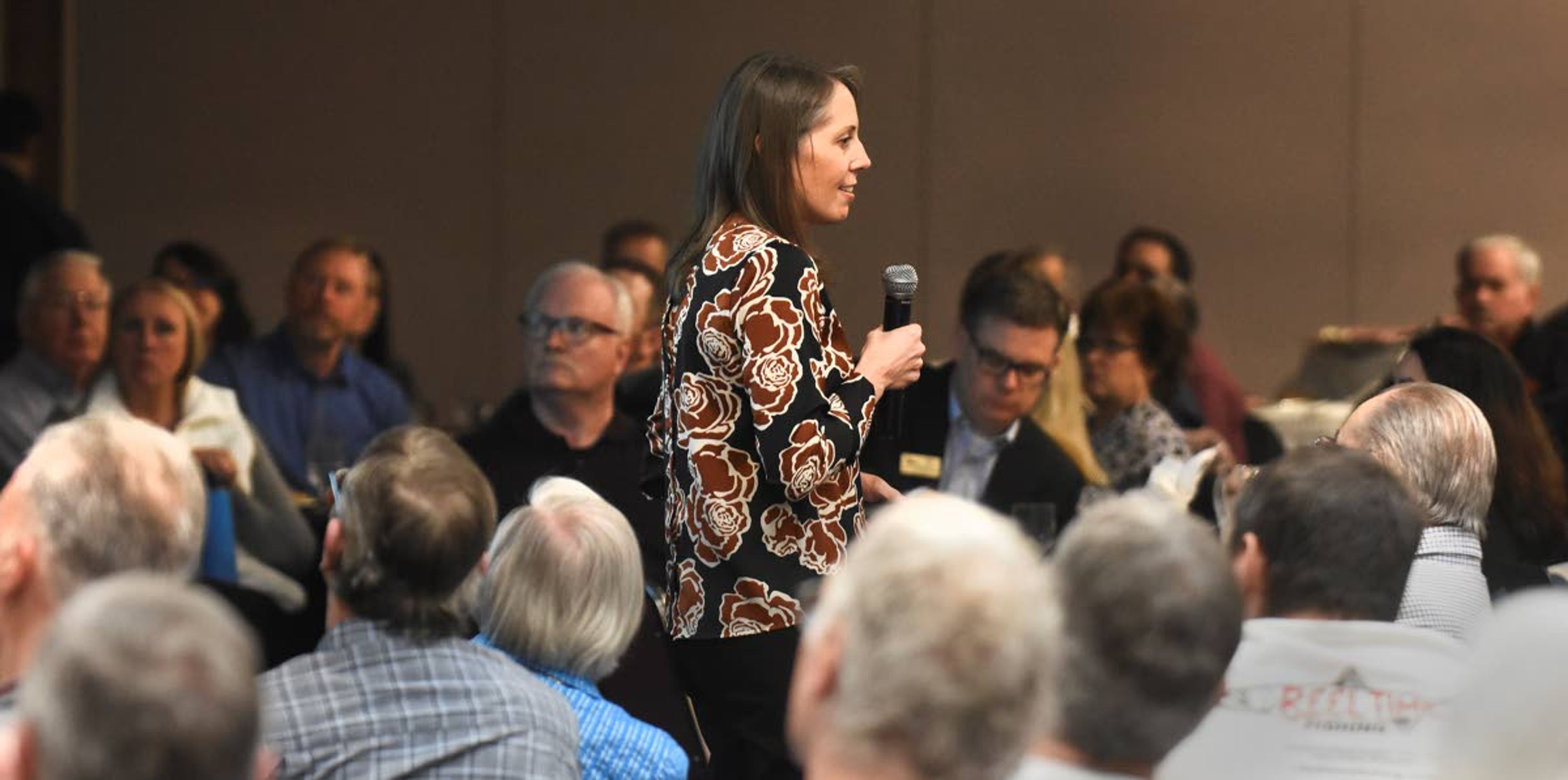Speaker says breaching the dams is no cure-all
Executive director of Pacific Northwest Waterways Association tells Lewiston audience salmon survival rates are good
Kristin Meira advocated for the Snake and Columbia hydropower system Thursday and said breaching Ice Harbor, Lower Monumental, Little Goose and Lower Granite dams on the Snake River is not the cure-all some claim for imperiled salmon and steelhead or Puget Sound orcas.
The executive director of the Pacific Northwest Waterways Association spoke to a packed house and largely friendly audience during a luncheon at Lewiston’s Red Lion Hotel organized by the Lewis-Clark Chamber of Commerce, Valley Vision, Southeast Washington Economic Development Association and the ports of Lewiston, Clarkston and Whitman counties.
Meira’s presentation was set against a backdrop of growing concern for orcas, also known as southern resident killer whales, and recent downturns in Snake River salmon and steelhead runs. The orcas and wild salmon and steelhead are protected by the Endangered Species Act.
In recent years, fish advocates have joined forces with those seeking to save the whales that serve as one of the iconic wildlife symbols of the Pacific Northwest. Both groups argue that breaching four lower Snake River dams would give a dramatic boost to Snake River chinook and thereby provide more food for orcas.
However, breaching would also end barge transportation on the lower Snake River and reduce the amount of hydropower marketed by the Bonneville Power Administration.
Meira called the system of dams, navigation locks and ports on the two rivers an export gateway. She said more than 50 percent of exported wheat in the country leaves through Snake and Columbia river ports, and wheat that is barged on the Snake River alone accounts for 10 percent of U.S. wheat exports.
“We are moving things that Americans are growing and making and want to move overseas,” she said.
If barge transportation were eliminated on the Snake River, Meira said it would take 43,000 rail cars or 167,000 trucks to move the same volume of wheat.
Hydropower produced at the dams is carbon free and helps back up other renewable energy sources like wind and solar farms.
“It’s power you can count on that is there day to day,” she said. “You need firm power sources to be able to integrate renewable sources.”
When it comes to salmon and orcas, Meira said all residents of the Northwest want to save both species, and she acknowledged breaching advocates have successfully wed the two issues.
“That link is being made very effectively,” she said.
But Meira countered that scientists at National Oceanic and Atmospheric Administration Fisheries don’t believe breaching is needed to save orcas and point to other problems faced by the whales. Those problems include the accumulation of toxins in their blubber from pollution that has traveled up the food chain, noise from vessels that interferes with orca feeding and the depressed nature of other chinook runs such as those in the Puget Sound region. She said when hatchery fish are taken into account, there are more Snake and Columbia river chinook available to orcas today than decades ago when the whales were doing much better.
“Snake River chinook are important to orcas, nobody should deny that,” she said. “But there are also lots of other chinook runs that are important for these orcas at other times of year.”
Removing the Snake River dams is incorrectly being advocated as a silver bullet, she said.
“That is not going to be the answer for these orcas,” she said. “They eat salmon all up and down the West Coast.”
At one point, Meira claimed NOAA scientists have said that breaching the dams would harm orcas because the release of sediment behind the dams would have a negative effect on chinook runs. She referenced a recent fact sheet put out by NOAA as evidence. However, that document does not say breaching dams would harm orcas or chinook.
Meira also said Snake River chinook numbers are trending upward and that studies have shown as many as 97 percent of juvenile salmon survive downstream passage at each individual Snake River dam.
“We are now seeing survival numbers for juvenile fish that rival and sometimes exceed what you see on undammed rivers,” she said.
The per-dam survival rate is a controversial topic in the salmon and dams debate. It indicates that juvenile salmon that arrived at a particular dam survived passing from one side to the other, what many call concrete-to-concrete survival. However, it doesn’t take into account how many salmon perish as they travel through reservoirs on either side of the dams or how many succumb to cumulative dam-passage trauma once they reach the Columbia River estuary and ocean.
Steve Pettit, a retired fisheries biologist who took in the talk said afterward that the number cited by Meira comes from “flawed research.”
For example, last year NOAA found that survival of juvenile chinook salmon from the Snake River basin to the downstream side of Bonneville Dam was just 38 percent, and the long-term survival average is less than 48 percent. Juvenile chinook survival through the all four Snake River dams averages about 75 to 80 percent, according to the NOAA fact sheet Meira cited.
Pettit also said recent trends show fish numbers on the decline.
“Why did we have this giant controversy over steelhead (fishing) last fall if the runs are trending upwards? It’s just the opposite.”
Meira told the audience they can learn more about all of the issues surrounding the dams at snakeriverdams.com, a website maintained by her organization.
Barker may be contacted at ebarker@lmtribune.com or at (208) 848-2273. Follow him on Twitter @ezebarker.










